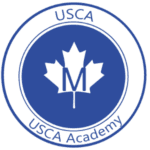| Course Type : | Academic |
| Credit Value : | 1.0 |
| Prerequisite : | None |
Course Description
This course is designed to develop the oral communication, reading, writing, and media literacy skills that students need for success in their secondary school academic programs and in their daily lives. Students will analyse literary texts from contemporary and historical periods, interpret informational and graphic texts, and create oral, written, and media texts in a variety of forms. An important focus will be on the use of strategies that contribute to effective communication. The course is intended to prepare students for the Grade 10 academic English course, which leads to university or college preparation courses in Grades 11 and 12.
Outline of Course Content
Unit
Titles and Descriptions
Time and Sequence
Unit 1
Language and Form
Through the readings of short articles from various forms of literature including poems and plays, students are introduced to the different terms and structures of literature. As they analyse each of the narratives, they compare and contrast them in terms of purpose, structure, mood, style, tone, audience, and language and begin to understand the conventions of narrative literature and language as they develop the tools and techniques for critical literacy.
25 hours
Unit 2
Literature
Students continue to study a range of short narratives and apply appropriate strategies to read, understand, and interpret the materials. They learn to apply both reading and listening strategies for great communication clarity. As they progress through the readings, students also develop research skills as they delve into the various topics the narratives introduce. And through the exercises and discussions they demonstrate greater proficiency in both oral and written communication.
25 hours
Unit 3
Media
Students analyse the various media forms, conventions and techniques to first define their criteria for effectiveness and then to determine their ability to obtain the results wanted. A review of the elements of visual products is discussed and students develop a variety of media texts and present these in class, describing also, how their skills in listening, speaking, reading and writing have helped them to interpret and produce media texts.
25 hours
Unit 4
The English Language
This unit is integrated into the other units as students progress through the course and develop greater proficiency in the English language. Topics include influences on the English language, levels of language, vocabulary development. formal and informal language styles, parts of speech parts of sentences sentence variety spelling rules punctuation, use of capitals. A brief synopsis is held at course end of reading and researching strategies, writing skills and techniques, oral communication skills and elements of visual production.
25 hours
Unit 5
Final Summative Assessment
The final summative assessments are both oral and written. The oral presentation builds on their memoir construction skills and is presented as a dramatic monologue. The exam assesses skills developed throughout the year in accordance with the provincial achievement chart and the course’s overall expectations
10 hours
Total
110 hours
Since the over-riding aim of this course is to help students use language skillfully, confidently and flexibly, a wide variety of instructional strategies are used to provide learning opportunities to accommodate a variety of learning styles, interests and ability levels. These include:
Directed Reading Activities | Seminar | Group work |
Brain storming | Literature Circles | Reflections |
Structured Discussions | Oral presentations | Close reading |
Role play | Self assessments | Teacher Analysis |
Independent Study | Peer assessments | Analysis of Exemplars |
Assessment is a systematic process of collecting information or evidence about a student’s progress towards meeting the learning expectations. Assessment is embedded in the instructional activities throughout a unit. The expectations for the assessment tasks are clearly articulated and the learning activity is planned to make that demonstration possible. This process of beginning with the end in mind helps to keep focus on the expectations of the course. The purpose of assessment is to gather the data or evidence and to provide meaningful feedback to the student about how to improve or sustain the performance in the course. Scaled criteria designed as rubrics are often used to help the student to recognize their level of achievement and to provide guidance on how to achieve the next level. Although assessment information can be gathered from a number of sources (the student himself, the student’s course mates, the teacher), evaluation is the responsibility of only the teacher. For evaluation is the process of making a judgment about the assessment information and determining the percentage grade or level.
Assessment is embedded within the instructional process throughout each unit rather than being an isolated event at the end. Often, the learning and assessment tasks are the same, with formative assessment provided throughout the unit. In every case, the desired demonstration of learning is articulated clearly and the learning activity is planned to make that demonstration possible. This process of beginning with the end in mind helps to keep focus on the expectations of the course as stated in the course guideline. The evaluations are expressed as a percentage based upon the levels of achievement.
English Grade 9: A variety of strategies are used to allow students opportunities to attain the necessary skills for success in this course and at the post-secondary level of study. To facilitate learning, the teacher uses a variety of activities engaging the whole class, small groups, and individual students.
The assessment will be based on the following processes that take place in the classroom:
| Assessment FOR Learning | Assessment AS Learning | Assessment OF Learning |
|---|---|---|
During this process the teacher seeks information from the students in order to decide where the learners are and where they need to go. | During this process the teacher fosters the capacity of the students and establishes individual goals for success with each one of them. | During this process the teacher reports student’s results in accordance to established criteria to inform how well students are learning. |
| Conversation | Conversation | Conversation |
Classroom discussion Self-evaluation Peer assessment | Classroom discussion Small group discussion Post-lab conferences | Presentations of research Debates |
| Observation | Observation | Observation |
| Drama workshops (taking direction) Steps in problem solving | Group discussions | Presentations Group Presentations |
| Student Products | Student Products | Student Products |
| Reflection journals (to be kept throughout the duration of the course) Check Lists Success Criteria | Practice sheets Socrative quizzes | Projects Poster presentations Tests In Class Presentations |
Some of the approaches to teaching/learning include
Strategy | Who | Assessment Tool |
Class discussion | Teacher | Observation Checklist |
Response Journal | Teacher | Anecdotal Comments |
Student Chosen Song | Teacher | Observation Checklist |
Narrative Poem/Song | Teacher | Rubric and Anecdotal Comments |
Character Sketch | Self | Checklist |
Journal Responses | Self/teacher | Anecdotal comments |
Short Story Analysis | Teacher | Rating scale |
Short Story Outline | Teacher | Rating scale |
Anecdote | Teacher | Direct Observation |
Found poem | Teacher | Direct Observation |
Journal Entries | Teacher | Anecdotal |
Research Notes | Self/Teacher | Checklist |
Non-fiction Report/Presentation | Teacher | Rubric |
Presentation to group | Self/Peer | Self and peer assessment rubric |
Sight passage | Teacher | Marking scheme |
Narrative piece | Teacher | Rubric |
English Grade 9: The evaluation of this course is based on the four Ministry of Education achievement categories of knowledge and understanding (25%), thinking (25%), communication (25%), and application (25%). . The evaluation for this course is based on the student’s achievement of curriculum expectations and the demonstrated skills required for effective learning.
The percentage grade represents the quality of the student’s overall achievement of the expectations for the course and reflects the corresponding level of achievement as described in the achievement chart for the discipline.
English Grade 9: A credit is granted and recorded for this course if the student’s grade is 50% or higher. The final grade for this course will be determined as follows:
- 70% of the grade will be based upon evaluations conducted throughout the course. This portion of the grade will reflect the student’s most consistent level of achievement throughout the course, although special consideration will be given to more recent evidence of
- 30% of the grade will be based on final evaluations administered at the end of the course. The final assessment may be a final exam, a final project, or a combination of both an exam and a
Textbook
- Live Ink: Print and Digital Student Kit A, Karen Hume, Sharon Jeroski, Rich MacPherson, et al Pearson Education
Potential Resources
- Novel: Skud by Dennis Foon or The Chrysalids by John WyndhamOSSLT Practice Materials (www.eqao.com)


